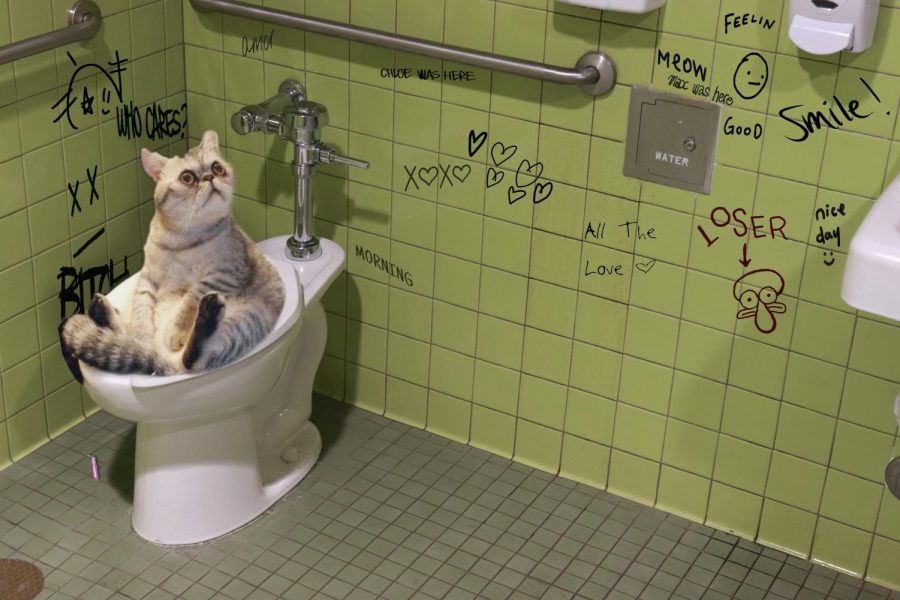The Dangers of Flushing Cat Poop Down Your Toilet - Advice for Better Disposal
The Dangers of Flushing Cat Poop Down Your Toilet - Advice for Better Disposal
Blog Article
Just about every person has got his or her own opinions involving Don’t flush cat feces down the toilet.

Introduction
As pet cat proprietors, it's important to be mindful of just how we take care of our feline friends' waste. While it might appear hassle-free to flush pet cat poop down the toilet, this technique can have damaging consequences for both the atmosphere and human health and wellness.
Alternatives to Flushing
Luckily, there are safer and much more accountable ways to deal with cat poop. Take into consideration the following choices:
1. Scoop and Dispose in Trash
The most common technique of getting rid of cat poop is to scoop it into a naturally degradable bag and toss it in the trash. Make sure to make use of a devoted litter scoop and deal with the waste promptly.
2. Use Biodegradable Litter
Choose biodegradable pet cat litter made from materials such as corn or wheat. These clutters are environmentally friendly and can be safely thrown away in the garbage.
3. Hide in the Yard
If you have a backyard, consider burying pet cat waste in an assigned location far from vegetable gardens and water sources. Be sure to dig deep sufficient to avoid contamination of groundwater.
4. Install a Pet Waste Disposal System
Purchase a pet dog waste disposal system especially created for feline waste. These systems utilize enzymes to break down the waste, lowering odor and environmental impact.
Health and wellness Risks
Along with ecological issues, flushing pet cat waste can likewise posture health threats to human beings. Feline feces may have Toxoplasma gondii, a bloodsucker that can create toxoplasmosis-- a possibly extreme ailment, specifically for expectant females and people with damaged body immune systems.
Environmental Impact
Purging feline poop introduces unsafe pathogens and bloodsuckers into the water, presenting a significant danger to water communities. These impurities can negatively affect marine life and concession water top quality.
Final thought
Responsible pet dog possession extends past providing food and sanctuary-- it additionally includes correct waste monitoring. By refraining from purging feline poop down the bathroom and choosing alternate disposal approaches, we can decrease our environmental impact and shield human health.
Why Can’t I Flush Cat Poop?
It Spreads a Parasite
Cats are frequently infected with a parasite called toxoplasma gondii. The parasite causes an infection called toxoplasmosis. It is usually harmless to cats. The parasite only uses cat poop as a host for its eggs. Otherwise, the cat’s immune system usually keeps the infection at low enough levels to maintain its own health. But it does not stop the develop of eggs. These eggs are tiny and surprisingly tough. They may survive for a year before they begin to grow. But that’s the problem.
Our wastewater system is not designed to deal with toxoplasmosis eggs. Instead, most eggs will flush from your toilet into sewers and wastewater management plants. After the sewage is treated for many other harmful things in it, it is typically released into local rivers, lakes, or oceans. Here, the toxoplasmosis eggs can find new hosts, including starfish, crabs, otters, and many other wildlife. For many, this is a significant risk to their health. Toxoplasmosis can also end up infecting water sources that are important for agriculture, which means our deer, pigs, and sheep can get infected too.
Is There Risk to Humans?
There can be a risk to human life from flushing cat poop down the toilet. If you do so, the parasites from your cat’s poop can end up in shellfish, game animals, or livestock. If this meat is then served raw or undercooked, the people who eat it can get sick.
In fact, according to the CDC, 40 million people in the United States are infected with toxoplasma gondii. They get it from exposure to infected seafood, or from some kind of cat poop contamination, like drinking from a stream that is contaminated or touching anything that has come into contact with cat poop. That includes just cleaning a cat litter box.
Most people who get infected with these parasites will not develop any symptoms. However, for pregnant women or for those with compromised immune systems, the parasite can cause severe health problems.
How to Handle Cat Poop
The best way to handle cat poop is actually to clean the box more often. The eggs that the parasite sheds will not become active until one to five days after the cat poops. That means that if you clean daily, you’re much less likely to come into direct contact with infectious eggs.
That said, always dispose of cat poop in the garbage and not down the toilet. Wash your hands before and after you clean the litter box, and bring the bag of poop right outside to your garbage bins.
https://trenchlesssolutionsusa.com/why-cant-i-flush-cat-poop/

Hopefully you liked our article on How to Dispose of Cat Poop and Litter Without Plastic Bags. Thanks so much for spending some time to browse our piece. Loved our piece? Please share it. Let another person find it. We thank you for reading our article about Can You Flush Cat Poo or Litter Down the Toilet?.
Book An Estimate Now Report this page